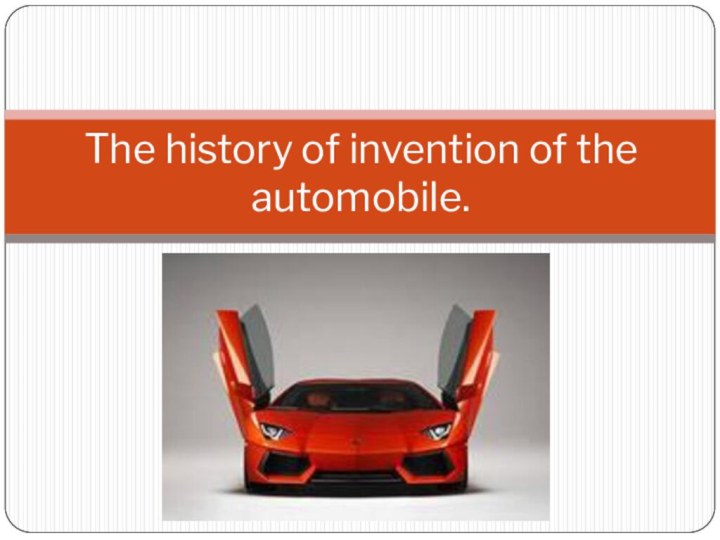- Главная
- Разное
- Бизнес и предпринимательство
- Образование
- Развлечения
- Государство
- Спорт
- Графика
- Культурология
- Еда и кулинария
- Лингвистика
- Религиоведение
- Черчение
- Физкультура
- ИЗО
- Психология
- Социология
- Английский язык
- Астрономия
- Алгебра
- Биология
- География
- Геометрия
- Детские презентации
- Информатика
- История
- Литература
- Маркетинг
- Математика
- Медицина
- Менеджмент
- Музыка
- МХК
- Немецкий язык
- ОБЖ
- Обществознание
- Окружающий мир
- Педагогика
- Русский язык
- Технология
- Физика
- Философия
- Химия
- Шаблоны, картинки для презентаций
- Экология
- Экономика
- Юриспруденция
Что такое findslide.org?
FindSlide.org - это сайт презентаций, докладов, шаблонов в формате PowerPoint.
Обратная связь
Email: Нажмите что бы посмотреть
Презентация на тему по английскому языку История изобретения автомобиля
Содержание
- 2. The first known drawings of the vehicle
- 3. In 1769, French inventor Kyuno tested the
- 4. In 1791, the Russian inventor Ivan Kulibin was made "self-propelled carriage."
- 5. There were isolated cases of building cars
- 6. Cars in Russia.Mass motorization in contemporary Russia
- 7. The most important trends in the global
- 8. Now has changed and the types of
- 9. Скачать презентацию
- 10. Похожие презентации
The first known drawings of the vehicle are owned by Leonardo da Vinci, but there is no information about the existence of the current instance these days. In 2004, experts from the Museum of the History









Слайд 3 In 1769, French inventor Kyuno tested the first
sample of the machine with a steam engine. In
the XIX century, steam-powered coaches and rutery (steam tractors, that is trackless locomotives) for ordinary roads were built in England, France and used in several European countries, including Russia, but they were heavy and uncomfortable voracious, so not widely .Слайд 5 There were isolated cases of building cars as
luxury items. For example, in the history came La
Marquise (official name - De Dion-Bouton et Trepardoux), built in 1884 and has worked on a steam-powered.In 1885, a German inventor Gottlieb Daimler, and in 1886 his compatriot Karl Benz produced and patented the first self-propelled carriages with gasoline engines. The automotive industry was born in the last decade of the XIX century in Germany, France and England.
Major contribution to the widespread road transport introduced American inventor and industrialist Henry Ford, from 1913 to infiltrate a conveyor system assembly of automobiles.
Слайд 6
Cars in Russia.
Mass motorization in contemporary Russia started
relatively late - in 1932.
In the mid-1950s, produced
and exported the Moskvich-402 and "Volga".After 1945, the Soviet Union became the world's largest producer of cars and trucks. But since the mid-1970s, the domestic auto industry gradually began to slip into a state of crisis, which is up to date.





























